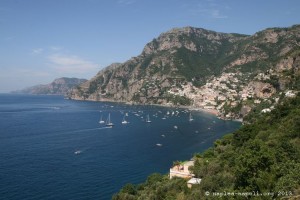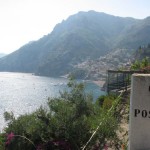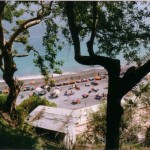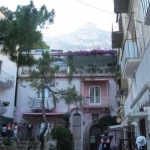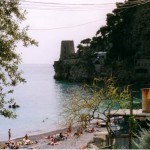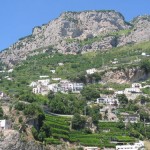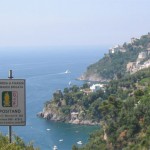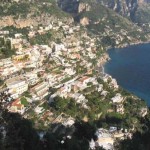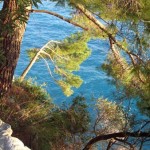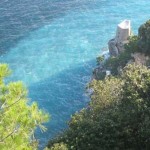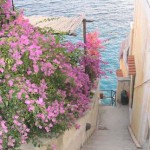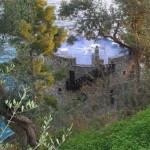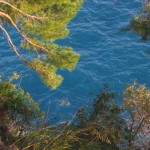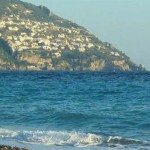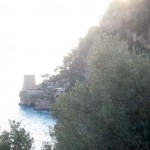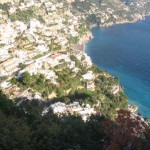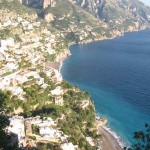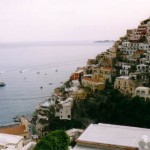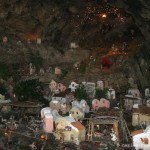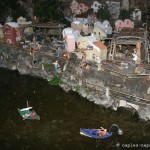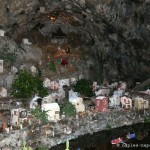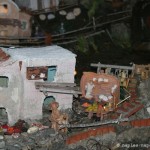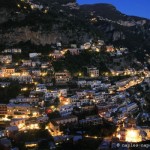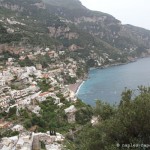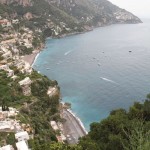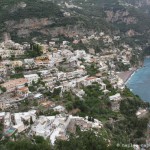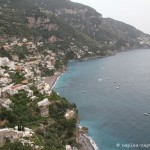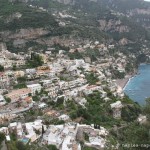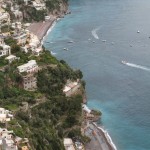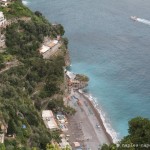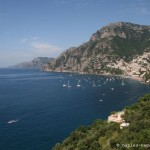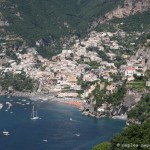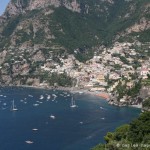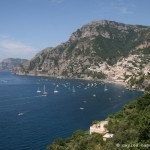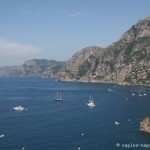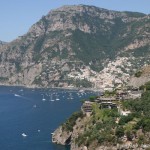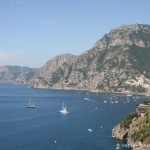Built on the flanks of a narrow valley, Positano is one of the most popular destinations in the region.
Its coastal neighborhood is one of the most beautiful parts of the Amalfi Coast. In the center of the village, down to the crowded beach in summer, stands Santa Maria Assunta, a beautiful church housing sculptures of the thirteenth and sixteenth centuries.
The many small stairs are typical of the village, crossing the village from its heights, cutting alleys, down to the beach.
The main beaches – the Great Beach and Fornillo – are within walking distance. The others – the Gate, Arienzo, San Pietro Laurito – are accessible by sea.
A little history
It is said that Positano was founded by residents of Paestum fleeing a raid of the Saracens, pirates who raged in the Mediterranean.
However, the clues suggest Roman origins, with however the discovery of Paleolithic remains indicating a much older occupation of the site.
It was already a holiday resort under the Roman Empire, as evidenced by the discovery of villas, including one recently found in 2004.
Positano was a prosperous port of the Republic of Amalfi until the 16th and 17th centuries. But from the mid-19th, it was a difficult time and more than half of the population emigrated, mainly to the United States.
During the first half of the 20th century, Positano was a relatively poor fishing village. Then, from the 1950s, it began to attract a growing number of tourists. Nowadays, tourism is its main industry.
Legend of the Madonna and the name of Positano
Legend has it that many years ago, in the twelfth century AD, a boat carrying a painting of the Byzantine virgin, criss-crossed the Tyrrhenian Sea, and sailed near the village of Positano.
It reigned a calm calm, when the sailors and the monks Benedictines heard a voice which said “POSE POSA” … (stop you here), coming from the painting of the Virgin Mary. (Hence the name of the village of Positano).
They docked, carrying the icon of the virgin in the church now located in the central square of the village, the Piazzetta dei Mulini (Small Square Mills). The next morning, the icon had miraculously disappeared … it was found near the sea. It was a miracle, and the Positanians founded in this place a new church dedicated, of course, to the Virgin Mary, celebrated on the 15th August of each year.
In this beautiful church, and among the abbots who officiated at the Abbey of Positano, there was Cardinal Vincenzo Maria Orsini, who later became Pope Benedict XIII.
The Saracen towers
In the Middle Ages, many towers were built to locate the Saracens, guilty of numerous incursions that endangered the local population.
- Tour sarrasine, Positano
- Crèche, Amalfi
- Crèche, Amalfi
- Crèche, Amalfi
- Crèche, Amalfi
- Positano vu depuis la route d’Amalfi
- La côte amalfitaine vers Positano


